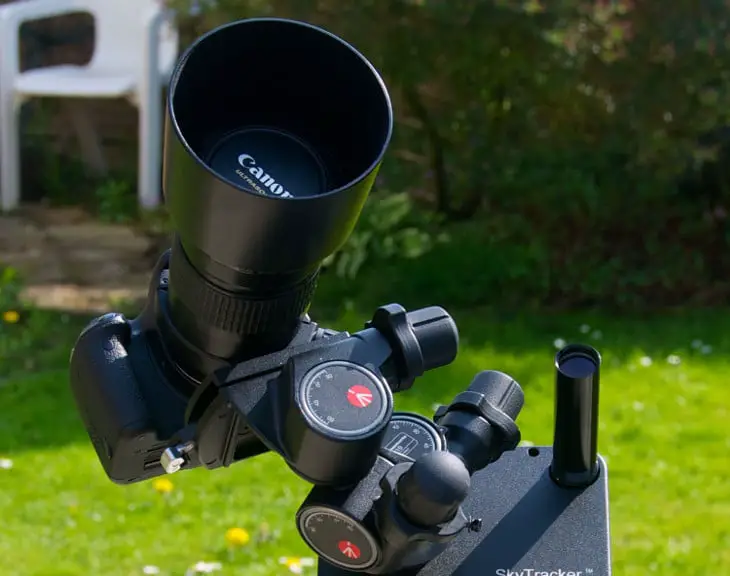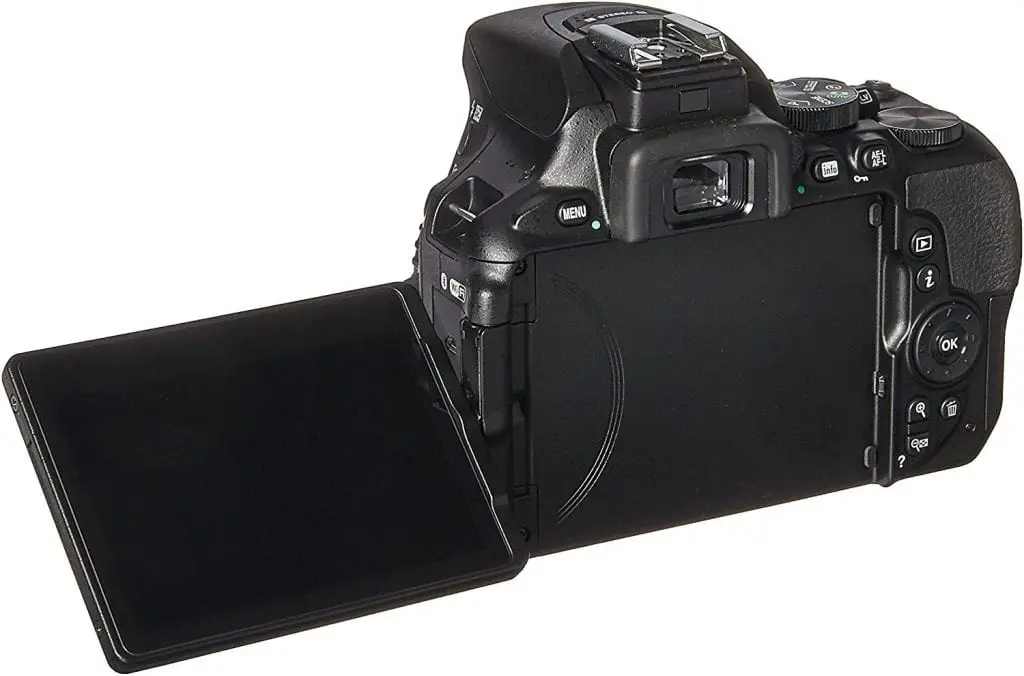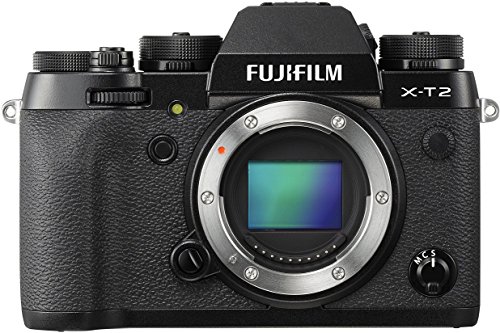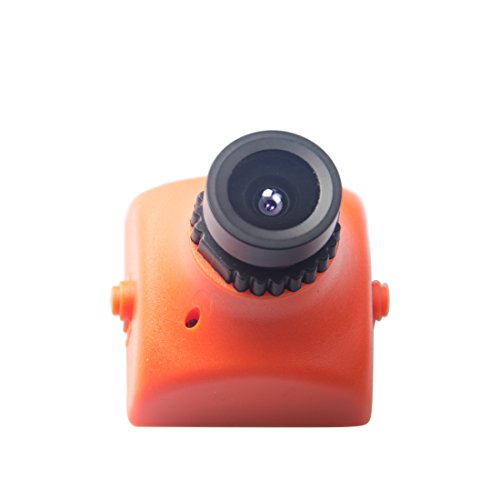As an Amazon Associate we earn from qualifying purchases.
Do you want to shoot the stars? Well, you will need something more capable than a point and shoot camera or your smartphone.
Astrophotography requires the use of advanced equipment. Taking photos of the sky at night is already very complex due to the lack of light entering your camera. So when you try to capture light from distant celestial bodies, the task is trickier.
The first thing you need is a good camera made for astrophotography. So if you want to catch celestial events such as a meteor shower or phenomena such as the Milky Way or the Northern lights, then a good astrophotography camera is what you need.
Read on below to find out more about these cameras and what makes them stand out.
Contents
Review of the Best Cameras For Astrophotography
With so many options present in the market, finding the best camera for astrophotography can be tough to do so. However, with the options mentioned below, you can find out which is the one for you. Read on below to find out more and the pros and cons of each camera.






Best Overall: Nikon D5600 DX-Format

PROS
- Speedy and simple operation
- Also has an external mic support
- Promises an excellent Image quality
- Ensures continuous shooting at 5fps
- Has a 24MP sensor Image with no OLPF
- 39 Point AF system allows great comfort
- Features a built-in Wi-Fi and Bluetooth communication
CONS
- Limited Wi-Fi remote control
- Underwhelming contrast autofocus during recording video
What Recent Buyers Report
Recent buyers have been extremely happy with their purchase of the D5600 DX-format Digital SLR Body camera. They love the features it has, and the fact that it is extremely lightweight. The focus adjustment is made by touch, which makes it user-friendly.
The build quality of the camera is great and very sturdy, too, which means you can carry it around wherever you go.
Why it Stands Out to Us
The Nikon D5600 is an amazing camera that offers exceptional image quality, intuitive controls, and powerful functionality that allow you to grow as your skills progress.
Unlike other cameras, it has a battery lasting over 970 shots per charge, which allows you to shoot all day. Not to mention, the camera holds great design and lens quality.
Who Will Use This Most
This is a great camera for astrophotography for professionals and amateurs getting themselves used to great equipment. The Nikon D5600 offers fast action with a five frame per second speed along with enhanced video features that allow for making great videos even in low light. The manual modes allow you to explore the vast and dynamic rages of your creativity.
Bottom Line
The Nikon D5600 is a great beginner and professional camera that offers all the features one can ask for in a compact, sturdy design, and it is amongst one of the few cameras out there that offer such exceptional features at such a low price. Having a great built quality, LCD screen, Menus, etc., not only is it great for photography, but it is also a great video making tool.
- 24.2MP DX format CMOS sensor
- Ex peed 4 image processor; approx.; 0.82 x (50 millimeter f/1.4 lens at infinity, 1.0 meter (1))
- 3.2 inches 1.037 meter dot VARI angle touchscreen. Max video clip length: 1920 x 1080: 29 minutes,...
Runner-up: Sony a7 III

PROS
- 5-axis stabilization
- Allows for 4K HDR video
- Flat profiles are available
- Has a 24MP full-frame BSI sensor
- Comes with a 10fps with tracking
- Design supports dual SD card slots
- Features a built-in silent shooting mode
CONS
- Has no in-body flash
- Lacks a PC sync socket
- You have to wait for shooting buffer to clear before making video
What Recent Buyers Report
The majority of recent buyers have reported that Sony a7 III ILCE7M3/B is the best camera available on the market. Many have switched to the Sony a7 III from Canon 5D Mark III. The body stabilization is something that the recent buyers have appreciated the most.
While the touch implementations could have been done better, it’s something that they can go without, keeping in mind the other features that the camera has.
Why it Stands Out to Us
The Sony a7 III is anything but an entry-level camera that has BSI CMOS sensors that excel in all types of light and offer a dynamic range. It has the ability to shoot at 10fps with an autofocus system that covers the entirety of the image sensor.
Having a great body that is both dust and splash-proof makes it a reliable and sturdy camera.
Who Will Use This Most
Since this is an intermediate and professional camera with its high-tech features and functionality, it is not something for a beginner. It is great for astrophotography as it works great in low light with its built-in stability control. It is a great model for those looking to up their creative game.
Bottom Line
In conclusion, this camera is one of the best astrophotography camera out there. It is capable of capturing ultra-high-resolution photographs using the high megapixels it comes with. Supporting a five-axis image stabilization system allows for long exposure shots. It is one of the best equipment out there that doesn’t disappoint.
- Advanced 24.2MP BSI full frame Image Sensor w/ 1.8X readout speed
- 15 stop dynamic range, 14 bit uncompressed RAW, ISO 50 to 204,800. Compatible with Sony E mount...
- Up to 10fps silent or mechanical shutter with AE/AF tracking. Battery life (Still Images): Approx....
Best for the Money: Fujifilm X-T2

PROS
- Built-in Wi-Fi connectivity
- Allows for 4k video making
- Has a dual hinged tilting display
- Built quality is dust and moisture resistant
- Comes with an 8fps shooting rate with focus tracking
- Provides superb handling and numerous film emulation options
CONS
- Does not feature inbuilt flash
- A raw buffer should have been larger
What Recent Buyers Report
Users have been extremely happy with their purchase. They have said that Fujifilm X-T2 it provides pro-quality pictures and is lighter than a DSLR with a high fps. It is one of the easiest to use cameras they have owned and allows for full manual shooting, which makes taking creative pictures hassle-free.
Why it Stands Out to Us
The Fujifilm X-T2 is a mid-range camera that is designed especially for photographers who need excellent low light performance, which means it’s great for astrophotography. It features an ISO range of 100-52 and doesn’t add much noise even with higher ISOs. It has an extremely fast focus system that beats all other mirrorless cameras.
Who Will Use This Most
This is a very easy to use camera which makes it great for beginners and professionals. With its great features and focus, it is a great pick for all the creatives out there who enjoy taking pictures of the sky.
It is a great camera for astrophotography due to its ability to work in low light. As mentioned earlier, its usage and menus are very easy, which means if you’re new and getting into photography, this is the best one for you.
Bottom Line
Fujifilm has done a great job with the X-T2. It has well-thought-out controls and comfortable usage. It features a control dial and a completely customizable Fn2 button with a focus toggle switch.
It has a smart control scheme and is usable in every weather, along with a great overall balance of the system and a great grip on the item itself.
- 24.3MP X Trans CMOS III APS-C sensor reduces moiré and false colors to improve image quality and X...
- Dust and moisture resistant body with approximately 63 points of weather sealing; Freeze resistance...
- High precision 0.48 inch, 2.36 million dot OLED viewfinder featuring a magnification of 0.77x and...
Best DSLR for Astrophotography: Nikon D7500

PROS
- Allows for 4k video making
- Body is sturdy and weather sealed
- Features a tilting touch LCD screen
- Has SnapBridge, Bluetooth, and Wi-Fi
- Comes with a built-in 20.9MP APS-C image sensor
CONS
- Autofocus system is not too robust
- Does not include a battery grip option
What Recent Buyers Report
Those who invested in the Nikon D7500 Nikon D7500 have said that it is a great camera with great focus and ISO performance. Some have tested motion pictures and have said that the Nikon seems to do better than many other expensive models. With an amazing exposure and color rendition, no tweaking is required.
Why it Stands Out to Us
The Nikon D7500 offers great functionality and features that the other Nikon models don’t have. It has a strongly built body with internal seals to protect it from any sort of dust or moisture. Having a built-in SnapBridge makes transferring files hassle-free.
It offers speed and fires in just 0.25 seconds. Having a 153 point wide coverage and the same 20.9MP APS-C image sensor and processor as the D7500 makes it one of the top Nikon cameras out there in the market.
Who Will Use This Most
This is a great and easy to use camera that is best suited for those that love to be creative out and share their vision and images with the world. If you’re a beginner or a pro, having the Nikon D7500 is a must. It is a sturdy and easy to use camera that makes astrophotography fun and problem-free.
Bottom Line
Overall, this is an excellent camera for the price, offering a great deal of versatility. It does a great job with its full-frame and EXPEED 4 image processors shooting up to 6.5fps at full resolution.
There is no other camera out there in the market for the price bracket the Nikon 7500 falls in. Plus, it has most of the features that one would require to capture the great beautiful sky.
- Class leading image quality, ISO range, image processing and metering equivalent to the award...
- Large 3.2” 922k dot, tilting Lcd screen with touch functionality. Temperature: 0 °c to 40 °c (32...
- 51 point AF system with 15 cross type sensors and group area AF paired with up to 8 fps continuous...
Best CCD Camera for Astrophotography: AKK CA20 600TVL

PROS
- Built to utilize low power
- Has very low illumination
- Super light and suitable for quadcopters
- Provides high quality pictures with its Mirror function
- Comes with special connecting cables for camera and FPV transmitter
CONS
- Weak mounting bracket
- Vertical viewing is problematic
What Recent Buyers Report
Buyers have been highly satisfied with their purchase of the product. They have AKK CA20 600TVL stated that it is very lightweight, and for the price, they couldn’t ask for more. The mounting screws work well, and the plastic housing is also quite sturdy. The picture quality is quite crisp, and the night mode works well too.
Why it Stands Out to Us
For such a low price, this camera couldn’t be any better. It features great OSD and other functionality. The camera comes with connecting cables and a simple and easy to use manual. Weighing just 12.4 grams, it has the capability to operate from 5v up to 22v and offers great pictures with excellent colors.
Who Will Use This Most
This is a great camera for those who just want to do astrophotography. For such a low price bracket, this is something that can get you amazing pictures. If you own a quadcopter, this is great for you since it is extremely lightweight and offers great results. Thus, it’s a great camera to experiment with and play around.
Bottom Line
The AKK CA20 brings you a whole new experience. It’s portable and lightweight and great for general use. The small camera offers great image quality and fast results due to its advanced OSD. Designed to consume less power and low illumination makes output time longer, providing clear results in the dark.
Best Canon Camera for Astrophotography: Canon EOS 6D

PROS
- Has a full-frame sensor
- Allows for 4.5fps shooting
- Includes integrated Wi-Fi and GPS
- Compact and lightweight for portability
- Comes with interchangeable focus screens
- Battery grip is available which means longer hours of photography
CONS
- Not compatible with EF-S lenses
- Viewfinder only offers 97 percent coverage
- While recording video, the focus speed reduces
What Recent Buyers Report
Reviewers of the Canon EOS 6D 6D have said that it is a great bargain option. The camera has great handling and button layout, which makes it easy and simple to use.
Besides that, the body is well-built and best-suited for photography and not video making. They have also said that the camera is very fast and super sensitive in low light, making their astrophotography experience great.
Why it Stands Out to Us
The Canon EOS 6D is the world’s lightest camera that features a full-frame. It is built with CMOS sensor technology and allows for flexible ISO speed settings. It makes taking pictures in low light indoor environments to outdoor and daylight settings easy.
Having a built-in Wi-Fi capability allows for wireless connections and fast and easy data transfer.
Who Will Use This Most
We believe that this a great camera for travelers and professional photographers. With so many built-in features and functionality, it is a great pick for astrophotography.
Having great stability and ISO controls, it is also great for wildlife and street photography. Being lightweight is an add-on that makes long hours of photography pain-free.
Bottom Line
The Canon EOS 6D is a well-built full-frame camera in a lightweight, compact body. Having a relatively affordable price and no compromises on the features, this is one of the most bought models around the globe. With this choice, there is no chance of going wrong.
- 20.2MP full frame CMOS sensor
- 4.5 frames per second continuous shooting
- 1080p HD video recording with manual controls
Best Nikon Camera for Astrophotography: Nikon D3400

PROS
- Has a sleek and slender design
- Has a guide mode present for beginners
- Provides users with 5.1 fps of continuous shooting
- Allows you to wirelessly transfer files via Bluetooth
- Comes with solid autofocus and great ISO performance
CONS
- Does not come with microphone input
What Recent Buyers Report
According to recent buyers, Nikon D3400 camera is amazing. It is ideal due to great ISO management, and you can use the 24.3 MP sensor, which is very sharp. Also, it shoots RAW images, which professionals seem to be quite fond of. It also has a low weight that the buyers appreciate.
Why it Stands Out to Us
The Nikon 3400 camera stands out because of its incredibly good features. It is ideal for casual use and can capture images that a smartphone cannot. Also, it provides you with wireless file transfer along with a guide mood that sets it for different lighting conditions and scenes.
Who Will Use This Most
Primarily, this camera is ideal for beginners and astrophotography. It has a smart autofocus feature and great ISO. It also has easy to use features such as an easily accessible control dial and excellent detailing. Features like great ISO an ideal camera to grab.
Bottom Line
In conclusion, this camera is a solid entry-level SLR and has a wireless transferability. It also has a guide mode that helps you get great shots. It is great for beginners and people wanting to shoot from a distance. It is a great piece to grab for the best astrophotography.
- Snap Bridge Bluetooth Connectivity
- 24.2mp dx format CMOS sensor
- Expeed 4 image processor
Comparison Chart of the Best Cameras For Astrophotography
What Makes a Camera Great For Astrophotography?
In order to find the perfect camera for astrophotography, you need a model with features that allow it to work in low lighting. The goal of your item should be catching as much light possible without reducing the quality or its color saturation.
Mentioned below are some essential features to look at:
ISO
This can be difficult for newbies to understand. However, you should use the ISO setting more and more in order to understand what it does.
ISO is basically the sensitivity of the camera sensor when there is light. During astrophotography, you point the camera on the sky, which is basically a wide expanse of darkness.
While those starry dots can be seen with the naked eye, it doesn’t mean the sensor can pick it too. Increasing the value of ISO can help you overcome such issues.
Shutter Speed
The camera shutter allows light to enter in. When you are not using the camera, the shutter closes and helps in protecting your image sensor. Once you click on the shutter, the camera can take pictures. So it is important for you to get a fast shutter for quick shots.

Image Sensor Size
A DSLR or a mirrorless camera both come with a sensor. So, you should look for is that. There are two types; a crop sensor which is also called APS-C and a full-frame sensor.
Full frame is one that is present on 35mm film. This is ideal for night photography, which includes astrophotography. The reason behind it is that it can capture relatively more light, and since it is larger in size, it has a good ISO range as well.
What Do I Need to Know Before Buying?
Before buying the best camera for astrophotography, you need to keep some things in mind. The most important features to focus on are:
Possibility With Long Exposures
The light coming from space objects is very dim. Therefore, in order to catch celestial bodies, it is necessary for you to open the shutter of your camera as wide as you can and wait for a long time period.
So the first requirement for astrophotography is that the camera should be able to work at long exposures.
Manual Settings
A camera that allows you to fully control the setting process is one worth buying. Make sure that you are attentive and find one that can let you adjust the exposure accordingly.
In addition, it should also support manual focusing since autofocus is only suitable for bright celestial bodies such as the sun and moon.

Shooting in RAW Format
Devices having RAW format are more ideal as they can save more detail. Also, with the raw format, you have better opportunities and more freedom. You can also process the images easily on your laptop with this feature.
People Also Ask
Even with all the information present above, some people are left with questions. Read on below to find the common answers for questions bothering you too.
How Many Megapixels Do You Need For Astrophotography?
For good astrophotography, you will need high megapixels. The number of MPs is usually 10 to 14 MP. Also, keep in mind that any camera with more than 7.2 MP will have good quality to print it on an eight by 10-inch size.
Are Mirrorless Cameras Better For Astrophotography?
Powering every DSLR camera or a mirrorless camera is a sensor. As long as the sensor is full-frame, large, and with good ISO range, nothing else can affect astrophotography. So it doesn’t really matter what kind of camera you use.
What Equipment Do I Need For Astrophotography?
There is some equipment gear that you need for good astrophotography. These include a good camera with a high ISO, prime wide-angle lens that has an aperture of at least f2.7 along with a tripod, and also a light pollution filter if you are in the city.
What is a Good Lens For Astrophotography?
In particular, the following lenses are recommended for astrophotography; Canon EF-S 10-22mm f/3.5-4.5 USM, Canon EF-15mm f/2.8, Nikon AF-S 14-24mm f/2.8G ED AF lens.
What is the Best Aperture For Astrophotography?
The ideal aperture for astrophotography is a fast aperture of F/2.8- F/4.
Is Full Frame Better For Astrophotography?
Undoubtedly, with a full-frame sensor, the results will be better as this will allow improved low light performance and also provide you with cleaner and clearer images. It is often advised to get an APS-C sensor.

Nikon D5600
Conclusion
With all the information mentioned above, you can easily find the best camera for yourself. However, make sure that you go through the reviews properly and focus on what feature attracts you the most. This article also has a buyer’s guide for you to make use of, so enjoy shopping!











